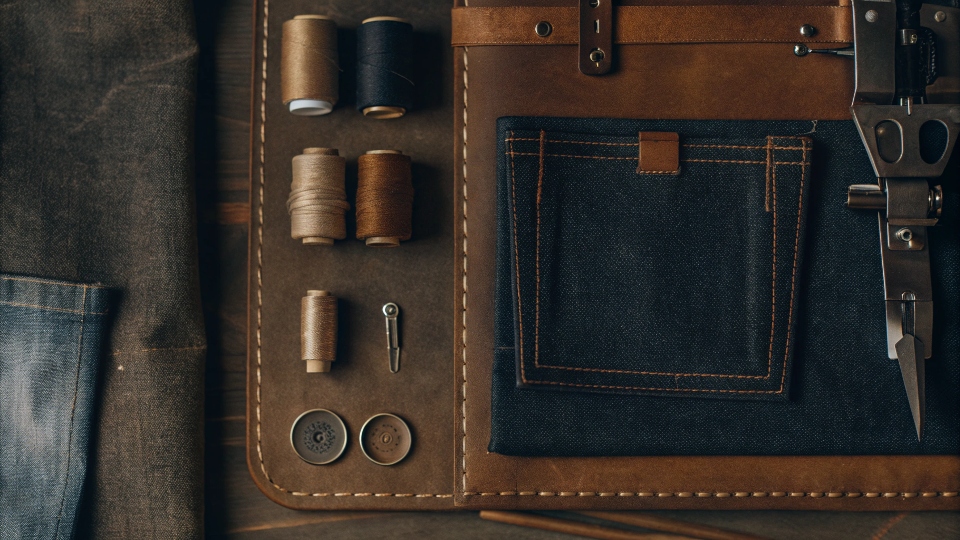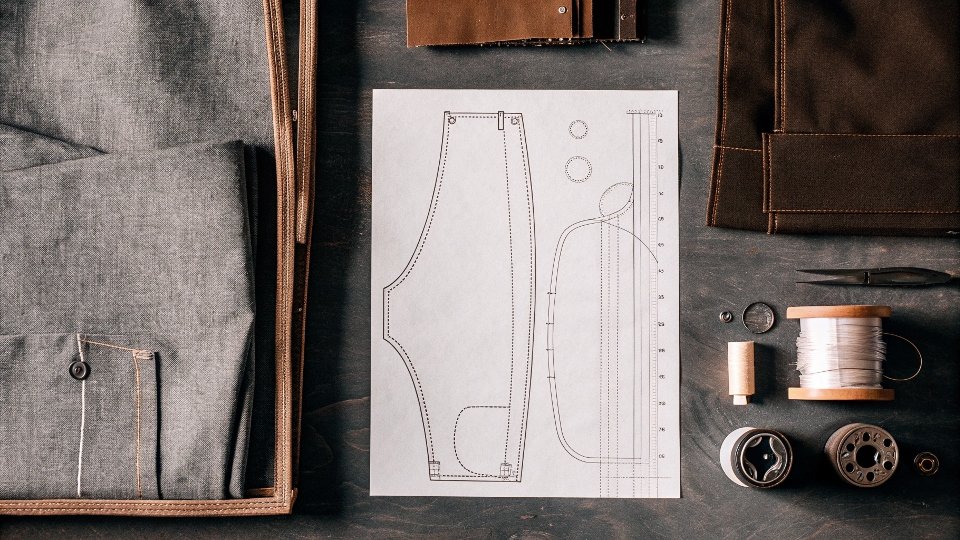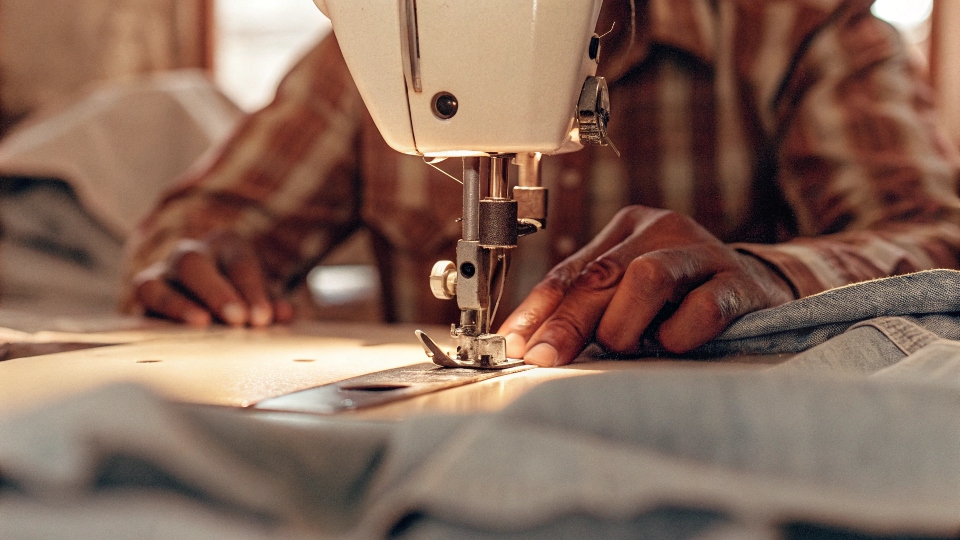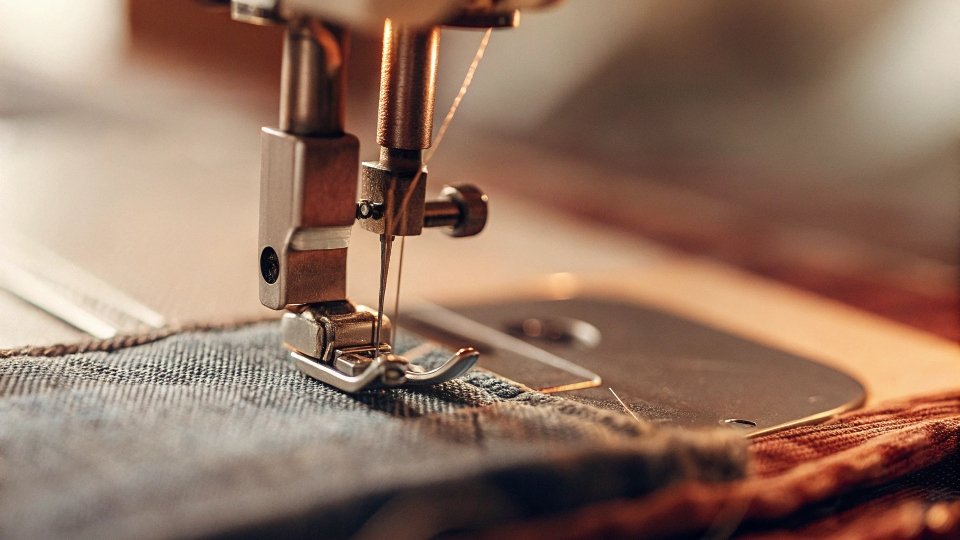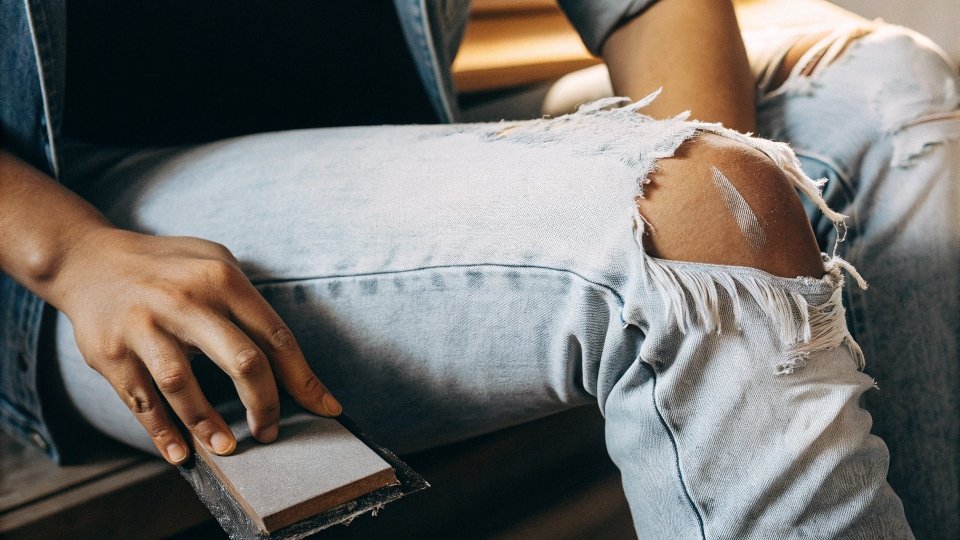You love jeans and want a pair that fits you perfectly. The idea of making your own is exciting, but the process seems incredibly complex and technical. You're worried you don't have the right skills or expensive equipment to even begin.
To make your own jeans, you need a heavy-duty sewing machine1, a good pattern, 12-14oz denim fabric2, and specific notions like heavy thread, rivets, and a button. The process requires precise cutting, advanced sewing techniques3 like flat-felled seams4, and careful hardware installation.
For over two decades, I've managed the production of thousands of pairs of jeans every single day. I've seen every step, from raw denim to the final finished product.
Taking on this process at home is a huge challenge. A designer I know, Dean, once told me that making a pair of jeans is the ultimate test for any sewer. But it is also one of the most rewarding projects you can do.
It gives you total control over the fit and a deep respect for the craft. Let's walk through what you really need to do it right.
What do I need to start making jeans?
You're excited to start, but you're staring at a blank shopping list. What fabric, what thread, what needles do you actually need? You want to be prepared without buying unnecessary tools.
To start making jeans, you will need a core set of supplies: non-stretch denim fabric, a paper sewing pattern designed for jeans, heavy-duty topstitching thread5, size 100/16 denim needles6, and a hardware kit with a zipper, button, and rivets.
In my factory, we buy materials by the ton, but the basic components are exactly the same. Getting the right materials from the very beginning is the most important step. Don't try to substitute these items, as each one is designed to handle the specific stress that jeans endure.
Choosing the wrong thread or needle will only lead to frustration and broken equipment. A good starting point is about 2 yards of 12oz to 14oz non-stretch, or "rigid," denim.
It's much easier to sew than denim with stretch in it. Getting this foundation right will make the entire construction process go much more smoothly.
Your Essential Jeans-Making Toolkit
| Category | Item | Why It's Important |
|---|---|---|
| Fabric | 12-14oz Rigid Denim | This classic weight is durable but manageable for a home machine. Rigid denim holds its shape well and is easier to control than stretch denim. |
| Pattern | Jeans Sewing Pattern | A good pattern is your blueprint. It provides the pieces and step-by-step instructions. Look for well-regarded independent pattern companies. |
| Thread | Topstitching & Construction Thread | You need thick, high-contrast topstitching thread for the classic look, and a strong construction thread (like Gutermann Mara 70) for the main seams. |
| Needles | Denim Needles (Size 100/16 or 110/18) | These needles have a sharp, reinforced point designed to pierce thick denim without breaking or skipping stitches. Standard needles will snap. |
| Hardware | Zipper, Button, & Rivets | Jeans hardware is heavy-duty. You'll need a metal jeans zipper, a tack button, and rivets. You will also need a small anvil and tool to set the rivets. |
How difficult is it to make your own pants?
You’ve sewn a shirt or a simple skirt before, but jeans look like they're on another level. All that thick fabric and detailed stitching seem intimidating. Is this project too advanced for you?
Making your own jeans is considered an advanced sewing project. The main difficulties are sewing through multiple thick layers of fabric, creating strong and precise seams like the flat-felled seam, and accurately installing metal hardware. It requires significant patience.
This is one of the hardest garments to make at home. One home sewer I talked to confirmed my suspicions. He said it’s almost impossible without a strong machine because the classic flat-felled seams (the durable double-folded seams on the yoke and inseam) often won't fit under the presser foot of a standard machine.
There are so many pattern pieces, and the topstitching has to be perfect. The most critical part is the fitting.You have to be patient and try the jeans on at almost every single stage of construction to make sure the fit is perfect before you sew the next seam.
This isn't a project you can rush through in an afternoon. It demands your full attention to detail from the first cut to the final rivet.
What sewing machine do I need to make jeans?
You look at your lightweight sewing machine and know it's not up to the task. You're afraid you'll burn out the motor just trying to sew a hem. What kind of machine can actually handle this job?
You need a heavy-duty mechanical sewing machine with a strong motor and a metal internal frame. An industrial sewing machine is ideal, but some powerful domestic models can work if you go slowly and use the correct needle and thread combination.
In my factory, we don't have one machine that does everything. We have an entire line of specialized industrial machines. There's a lockstitch for sewing the main seams, a chainstitch machine for hemming, a bar tack machine for belt loops, and an automatic machine just for setting pockets.
Each one is designed to do one task perfectly and at incredibly high speed. When you make jeans at home, you are asking one single machine to do all of these jobs. That is why you need a powerful one.
A basic, lightweight plastic machine will not survive. Look for a "heavy-duty" model that is advertised for upholstery or thick fabrics.
Key features are a strong motor that won't strain, a metal frame for stability, and high presser foot clearance to fit bulky seams underneath it.It's an investment, but it's the only way to get the job done without destroying your equipment.
How to fray jeans fast at home?
You’ve finally finished your jeans, but they look too clean and new. You want to give them some character and a worn-in, distressed look. How can you create authentic-looking frays without waiting years?
To fray jeans quickly, target high-wear areas like knees and hems with an abrasive tool like sandpaper or a pumice stone. Once the an ares is weakened, use tweezers to carefully pull out the white horizontal threads to create a natural-looking hole.
This is my specialty. At DiZNEW, we use everything from high-powered lasers to hand-grinding tools to create distressed looks for major brands. This process is all about accelerating the natural aging of the fabric. You can use simple tools at home to get a very similar effect. The key is to first weaken the fabric by rubbing it.
Place a block of wood inside the jean leg so you have a hard surface to work on. Then, use medium-grit sandpaper and rub the area you want to fray until the color lightens and the fabric thins.
After that, you'll see the individual threads. Denim is woven with blue vertical threads (the warp) and white horizontal threads (the weft). Carefully use a seam ripper or tweezers to hook and pull out the white weft threads one by one.
This will leave a patch of only the vertical blue threads, creating that classic frayed look. It takes some time, but it gives you complete control over the final result.
Conclusion
Making your own jeans is a tough but incredible marathon of a project. It requires the right tools, a lot of patience, and gives you a deep appreciation for the craft.
-
Explore this link to find the top-rated heavy-duty sewing machines that can handle thick denim with ease. ↩
-
Learn about the best types of denim fabric that are durable and perfect for making jeans. ↩
-
Discover advanced sewing techniques that will elevate your jeans-making skills. ↩
-
Learn the technique of flat-felled seams, crucial for strong and professional-looking jeans. ↩
-
Find out why topstitching thread is essential for jeans and where to buy the best options. ↩
-
Get insights on the right size of denim needles to ensure smooth sewing through thick fabric. ↩

